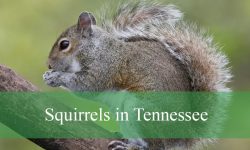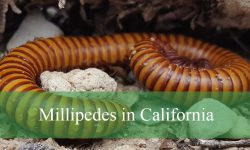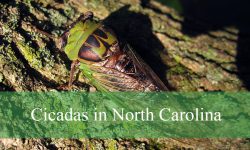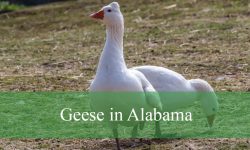Pennsylvania is home to a remarkable diversity of insects, from helpful pollinators to aggressive stingers and stealthy biters. While most bugs in the state are harmless, a few can pose real threats to humans, pets, and even property. Understanding which species to watch for can make outdoor activities safer and more enjoyable.
This guide covers the 20 most dangerous bugs in Pennsylvania, complete with identification tips, behaviors, and habitats. From venomous spiders and painful stingers to disease-carrying ticks and mosquitoes, each entry helps you recognize potential dangers before they become a problem.
Exploring Pennsylvania’s forests, parks, and backyards becomes far safer once you understand the insects that pose risks. Awareness and prevention are your best defenses against these small but potentially harmful creatures that share the state’s diverse environment.
Types of Dangerous Bugs Found in Pennsylvania
American Dog Tick (Dermacentor variabilis)
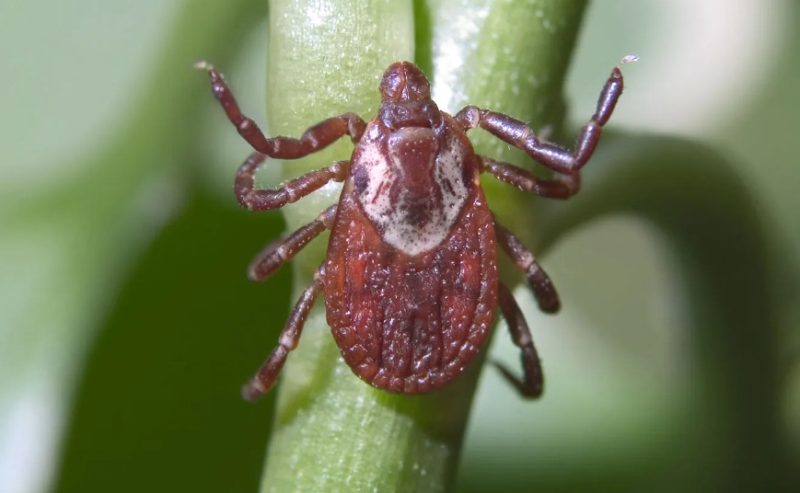
The American Dog Tick is one of the most widespread tick species in Pennsylvania, commonly found in grassy fields, along trails, and near forest edges. Adult females are larger than males, measuring about 5 mm unfed and up to 15 mm when engorged. Their bodies are dark brown with ornate silvery-gray patterns on the scutum.
These ticks prefer warm, sunny environments and are most active from April through September. They typically attach to dogs and other medium-sized mammals but will also feed on humans when encountered. Unlike the Deer Tick, the American Dog Tick does not transmit Lyme disease but is capable of spreading other dangerous illnesses.
This species is a known carrier of Rocky Mountain spotted fever (RMSF) and tularemia, both of which can be life-threatening if untreated. RMSF symptoms include fever, rash, and muscle pain, while tularemia may cause ulcers and swollen lymph nodes. Because it feeds for long periods, the chance of pathogen transmission increases the longer it remains attached.
Though they have no venom, their bite can cause skin irritation or localized infection. Using insect repellent, wearing light-colored clothing, and checking pets regularly after outdoor activities are important for prevention. American Dog Ticks are one of the key species to watch in Pennsylvania due to their abundance and disease potential.
Lone Star Tick (Amblyomma americanum)
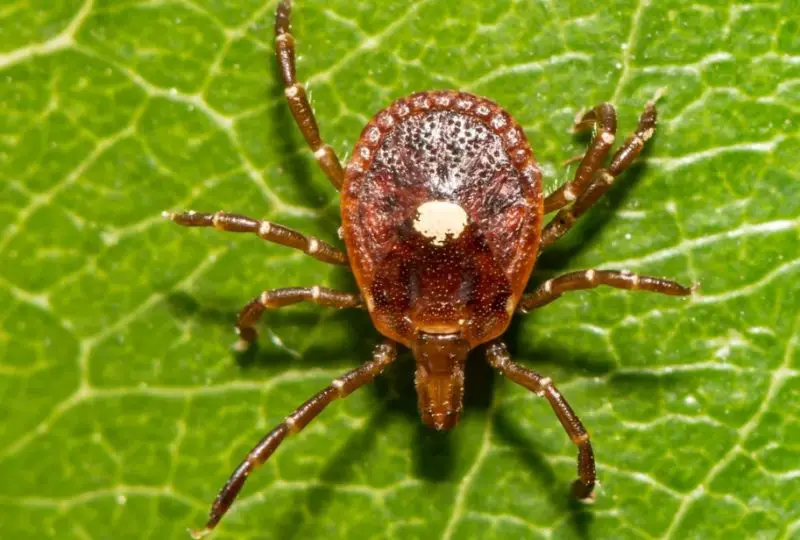
The Lone Star Tick is named for the single silvery-white spot found on the back of adult females, a feature that makes it easy to identify. Adults are about 3–4 mm long, with reddish-brown coloration that becomes darker after feeding. Males lack the white spot but have ornate dark markings on their backs.
This tick thrives in dense underbrush and shaded woodlands, especially in southeastern and south-central Pennsylvania where deer populations are high. It is a very aggressive species that actively seeks out hosts rather than waiting passively on vegetation. Humans, dogs, and deer are the most common hosts.
The Lone Star Tick is infamous for its link to alpha-gal syndrome, a condition that causes an allergic reaction to red meat after being bitten. It can also transmit ehrlichiosis and Southern Tick-Associated Rash Illness (STARI), both of which cause fever and flu-like symptoms. Cases of these diseases have been rising as the tick’s range expands northward.
Although it doesn’t inject venom, its saliva can trigger severe allergic responses and long-term meat sensitivities. Avoiding brushy areas, using permethrin-treated clothing, and conducting thorough tick checks are essential ways to reduce exposure to this persistent and dangerous species.
Mosquitoes (Various species)
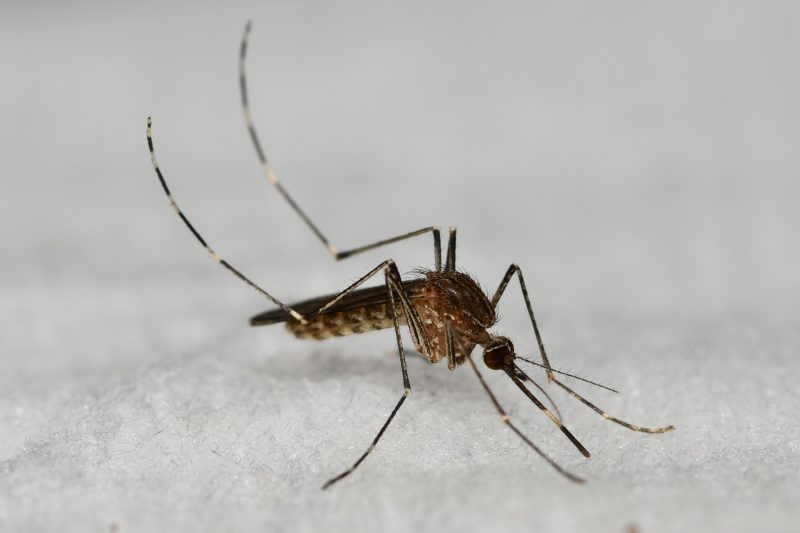
Mosquitoes are small, slender insects that thrive in Pennsylvania’s warm months, particularly from late spring through early fall. Female mosquitoes measure around 3–6 mm and are equipped with long, needle-like proboscises for piercing skin and sucking blood. Their buzzing sound and light body make them easily recognizable.
They breed in stagnant water sources such as ponds, buckets, gutters, and even puddles. After feeding on blood, females lay eggs in or near water, continuing the life cycle. Pennsylvania is home to several mosquito genera, including Culex, Aedes, and Anopheles, all of which can serve as disease vectors.
The most serious mosquito-borne disease in Pennsylvania is West Nile virus, which affects both humans and birds. Most infections are mild, but severe cases can lead to brain inflammation and even death. Mosquitoes can also transmit diseases like Eastern equine encephalitis and La Crosse virus, though these are rarer.
While their bite itself causes only minor irritation, the diseases they transmit make them one of the most dangerous insects in the state. Reducing standing water, wearing repellent, and using window screens are simple but effective ways to control mosquito populations around homes.
Groundhog Tick (Ixodes cookei)
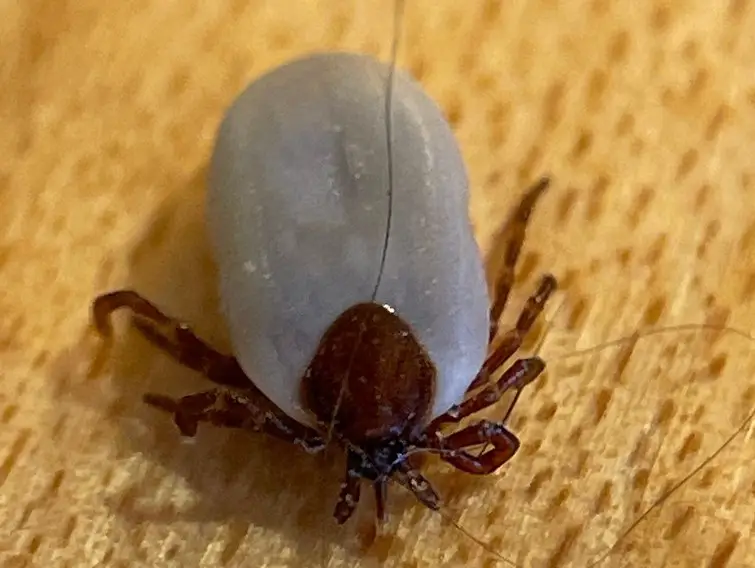
The Groundhog Tick is a small, reddish-brown species that resembles the Deer Tick but prefers to feed on groundhogs, skunks, and small mammals. Adults are around 3 mm long, with an oval body and short mouthparts. They are commonly found in grassy areas near burrows or wooded clearings.
This species is distributed throughout Pennsylvania and is most active in the warmer months. Although humans are not their preferred hosts, they may bite when their typical animal hosts are unavailable. Their behavior is relatively passive; they usually wait on low vegetation for passing animals.
Groundhog Ticks are known carriers of the Powassan virus, a rare but potentially fatal disease that causes brain inflammation. Unlike other tick-borne diseases, Powassan virus can be transmitted within minutes of a bite. Symptoms include headache, fever, vomiting, and in severe cases, neurological complications.
Though the virus is rare, its severity makes this tick noteworthy among Pennsylvania’s dangerous arthropods. Preventive steps are similar to those for other ticks: avoiding tall grass, using repellents, and checking for ticks after spending time outdoors. Prompt removal is key to minimizing any potential risk.
Brown Recluse Spider (Loxosceles reclusa)
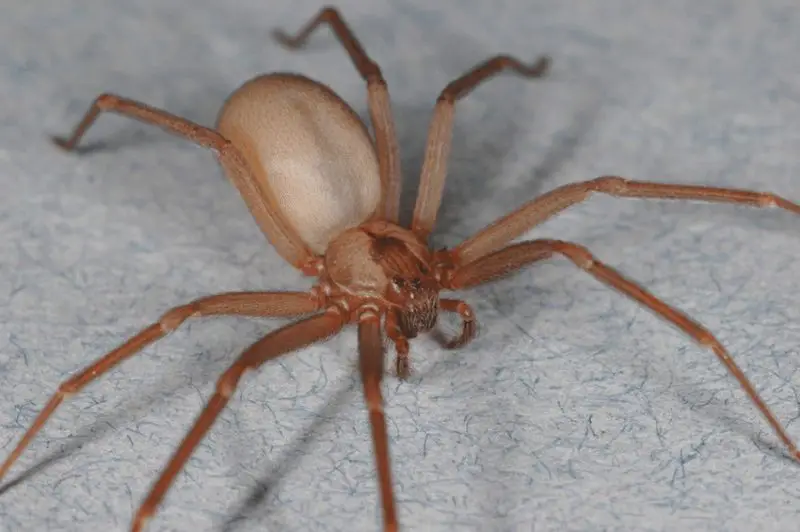
The Brown Recluse Spider is a small, light to dark brown spider that can be recognized by the distinct violin-shaped marking on its back. Adults measure between 6 to 12 mm (¼ to ½ inch) in body length and have long, slender legs. Unlike most spiders, the Brown Recluse has six eyes arranged in pairs, a key feature for identification.
Although this species is more common in the Midwest and southern states, isolated populations and accidental introductions have been recorded in Pennsylvania. They prefer dry, secluded environments, such as basements, closets, attics, and sheds, where they can hide undisturbed. Their shy and nocturnal nature means encounters with humans are uncommon.
The Brown Recluse’s venom contains necrotic enzymes that destroy tissue at the bite site. While many bites cause mild irritation, severe cases can lead to deep, slow-healing ulcers and systemic symptoms like fever, chills, and fatigue. Medical attention is crucial if necrosis develops or the bite area expands rapidly.
Despite its dangerous reputation, this spider rarely bites unless pressed against the skin or disturbed. Keeping storage areas clean, sealing gaps, and shaking out clothing before use are simple but effective precautions to avoid contact with this elusive species.
Northern Black Widow (Latrodectus variolus)
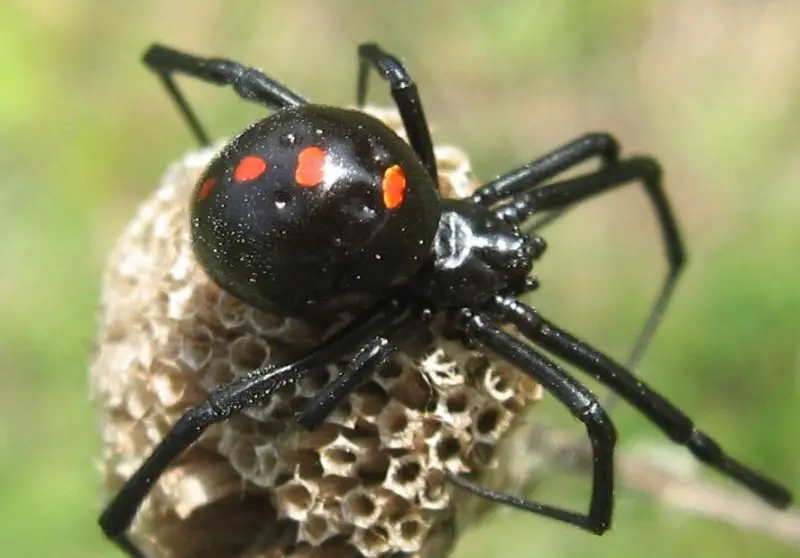
The Northern Black Widow is one of the few medically significant spiders found in Pennsylvania. Females are shiny black with a distinct red or orange hourglass marking on the underside of their abdomen, sometimes broken into two spots. Males are smaller and lighter in color, with more subtle markings.
They prefer dark, sheltered areas such as rock piles, woodpiles, garages, and sheds. Northern Black Widows are not aggressive and typically retreat when disturbed, but females may bite when defending their egg sacs. These spiders are more active during the warmer months from May through October.
Their venom contains neurotoxins that interfere with nerve transmission, causing severe pain, muscle cramps, nausea, and sweating. Although rarely fatal, black widow bites can be extremely painful and may require medical treatment, particularly for children or the elderly. Antivenom is available in severe cases.
Preventing bites involves avoiding cluttered outdoor areas, wearing gloves while handling firewood, and keeping storage sites tidy. Because the species helps control pest insects, they should not be killed unless they pose a direct threat in living spaces.
Velvet Ant (Dasymutilla occidentalis)
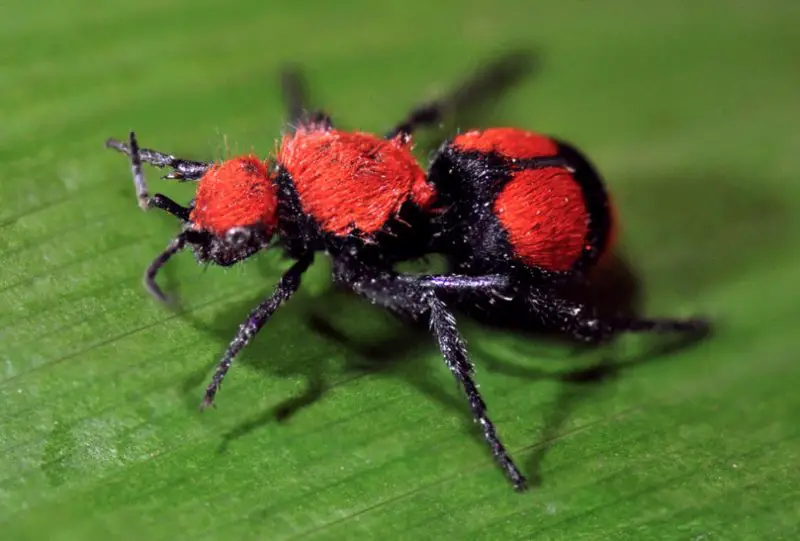
The Velvet Ant, often called the Cow Killer Ant, is actually a wingless female wasp, not a true ant. It is easily recognized by its striking bright red-orange and black coloration and dense, velvety hair. Adults measure between 12 and 19 mm (½ to ¾ inch), making them one of the largest solitary wasps in Pennsylvania.
These insects inhabit sandy soils, meadows, and open fields, especially in sunny areas where ground-nesting bees and wasps are common. Females wander the ground searching for other insects’ nests, where they lay eggs that parasitize the host larvae. Males, unlike females, have wings and are harmless since they cannot sting.
The Velvet Ant’s sting is exceptionally painful—often ranked among the strongest in North America—but it is not lethal. Its venom causes immediate burning pain that can last for several minutes, though it rarely leads to lasting damage. The species relies on its bright warning colors to deter predators rather than aggression.
Despite their intimidating nickname, Velvet Ants are solitary and non-aggressive, stinging only when handled or trapped. Observing them from a distance and avoiding direct contact is the best way to stay safe. They are a fascinating part of Pennsylvania’s insect diversity and rarely pose any real threat.
Bald-faced Hornet (Dolichovespula maculata)
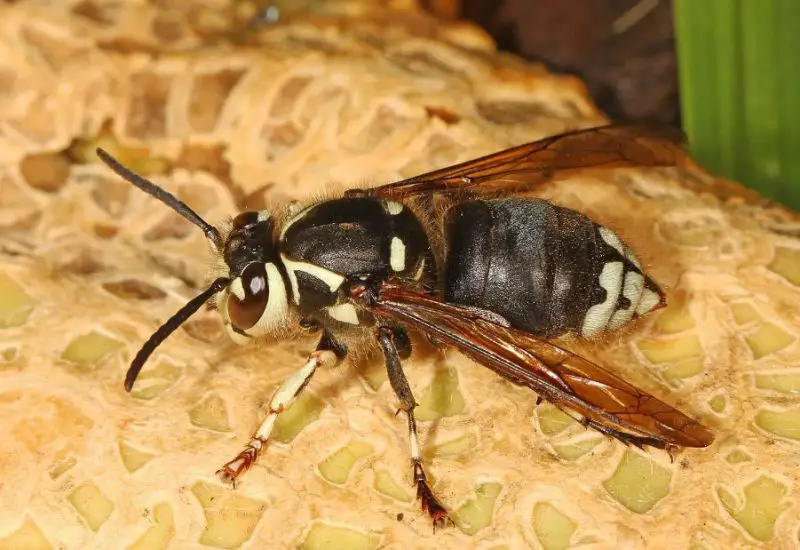
The Bald-faced Hornet is a large, black-and-white wasp that can grow up to 19 mm (¾ inch) long. Its striking facial markings and smooth, hairless body distinguish it from true hornets. Despite its name, it is technically a type of yellowjacket wasp, known for its aggressive defense of its nest.
These hornets build large, papery nests that can reach the size of a basketball and are typically suspended in trees, shrubs, or on buildings. Colonies are most active during the late summer when their populations peak. Each nest can contain hundreds of workers that will defend their queen and larvae fiercely.
Their sting delivers potent venom that causes intense pain, burning, and swelling. Multiple stings can occur when a nest is disturbed, leading to severe allergic reactions or even anaphylaxis in sensitive individuals. While their sting is rarely deadly, the sheer number of attackers can be dangerous.
Bald-faced Hornets play an ecological role by preying on flies and other pests, but their proximity to human activity often leads to conflict. Removing or relocating nests should be done by professionals, and avoidance is strongly advised during nesting season.
Eastern Yellowjacket (Vespula maculifrons)
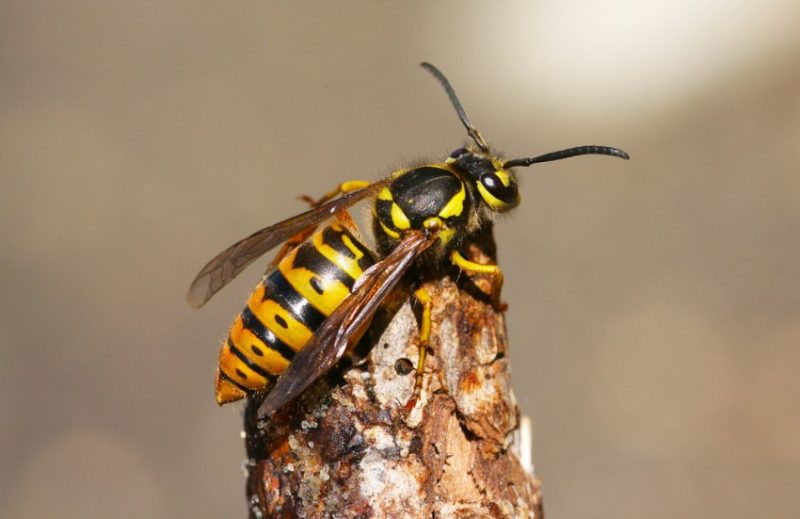
The Eastern Yellowjacket is a small, black-and-yellow social wasp that measures about 12 mm (½ inch) long. Its distinctive bright markings and rapid, darting flight make it easy to spot near food or trash areas. Yellowjackets are among the most common stinging insects encountered in Pennsylvania.
They build paper nests underground or in wall cavities, often in lawns, fields, and building foundations. Colonies can grow to several thousand individuals by late summer, and the wasps become increasingly aggressive as food becomes scarce. They feed on sugary substances and proteins, frequently visiting picnic sites and garbage bins.
The Eastern Yellowjacket’s sting is extremely painful and contains venom that causes swelling, redness, and in some cases, severe allergic reactions. Unlike honeybees, they can sting multiple times, injecting venom with each strike. People allergic to wasp venom may experience anaphylaxis and require immediate medical care.
Maintaining clean outdoor areas, sealing trash containers, and avoiding perfume or bright clothing during outdoor activities can help prevent encounters. Their defensive nature makes them one of Pennsylvania’s most problematic insects during late summer and early fall.
European Hornet (Vespa crabro)
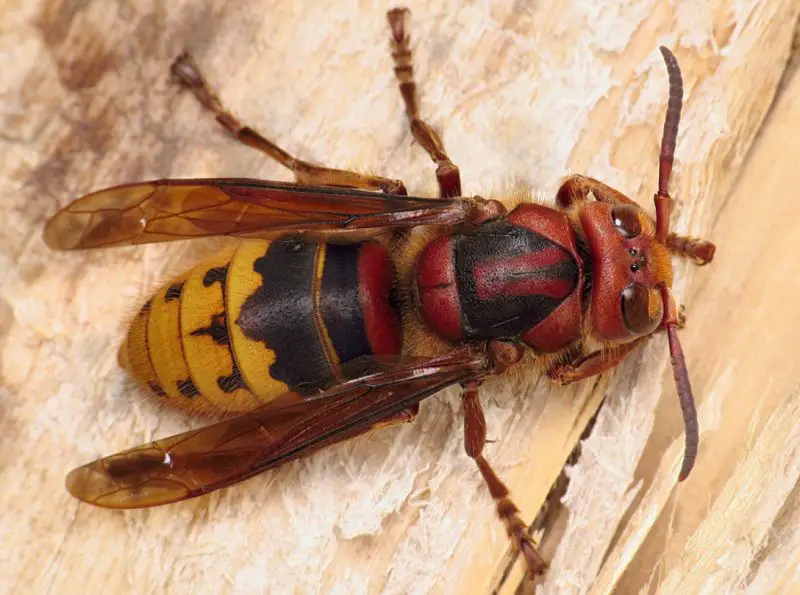
The European Hornet is Pennsylvania’s largest social wasp, easily recognized by its reddish-brown head, yellow-striped abdomen, and long transparent wings. Adults typically measure between 20 and 35 mm (¾ to 1½ inches), making them noticeably larger than yellowjackets or paper wasps. Despite their intimidating size, they are generally less aggressive when away from the nest.
They build papery nests in hollow trees, attics, wall cavities, and sometimes under eaves. Each colony can contain hundreds of workers, all of which defend their queen with coordinated attacks. European Hornets are active mostly at night and are attracted to lights, making nighttime encounters possible near porches or windows.
Their sting is very painful due to the amount of venom injected and their ability to sting multiple times. The venom can cause significant swelling, redness, and burning sensations. In allergic individuals, even a single sting may result in a serious reaction, such as difficulty breathing or anaphylaxis.
While dangerous when provoked, European Hornets also play a beneficial ecological role by preying on flies, moths, and other pests. If a nest is located near human activity, it should be professionally removed, as disturbing it can provoke a swarm response.
Paper Wasp (Polistes species)
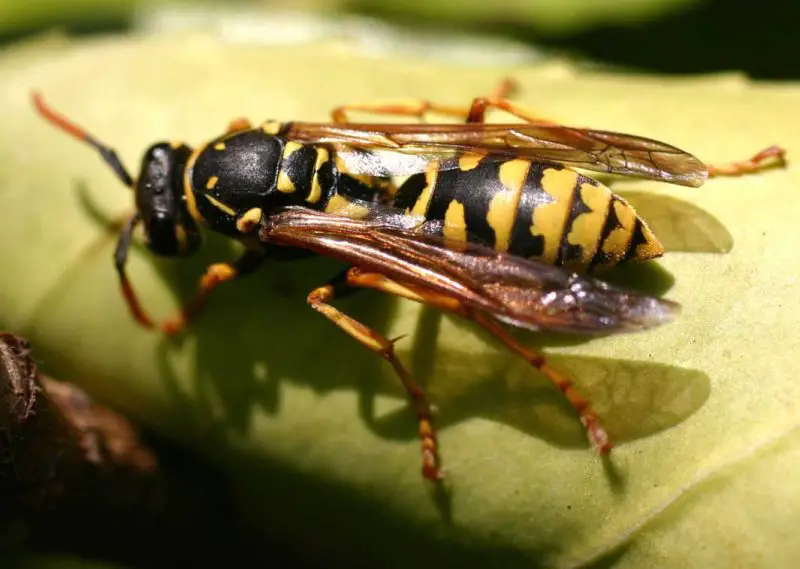
Paper Wasps are slender, long-legged wasps that measure about 15 to 20 mm (⅝ to ¾ inch) in length. They have narrow waists and a brown or black body with yellow or reddish markings. Their open, umbrella-shaped nests—built from chewed plant fibers mixed with saliva—are a common sight under roof eaves, porch ceilings, and branches.
These wasps are less aggressive than hornets or yellowjackets, but they will defend their nests if threatened. Colonies are relatively small, usually containing fewer than 100 individuals. Paper Wasps are often seen hovering around flowers, as they feed on nectar and help pollinate plants while hunting caterpillars to feed their larvae.
The sting of a Paper Wasp is intensely painful, often followed by swelling and itching. For most people, the symptoms subside within a few hours, but for those allergic to wasp venom, even one sting can cause serious complications. Because they can sting repeatedly, multiple attacks are especially painful.
Avoiding sudden movements near nests and sealing outdoor structures during summer can minimize risk. Since they are valuable pest controllers, removing nests only when necessary is a reasonable approach to coexist with these insects safely.
Assassin Bug / Wheel Bug (Arilus cristatus)
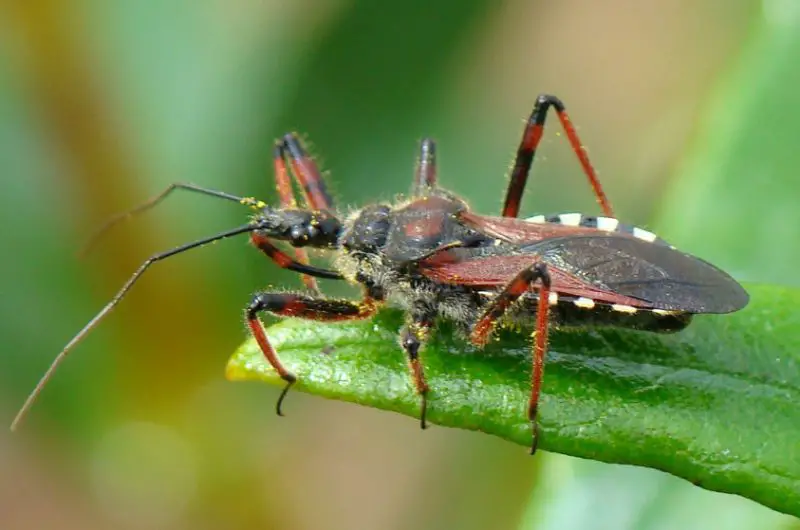
The Wheel Bug is a large predatory insect belonging to the assassin bug family, notable for the semicircular, gear-shaped crest on its thorax that resembles a toothed wheel. Adults measure about 25 to 35 mm (1 to 1.4 inches) long and have grayish-brown bodies with long, curved mouthparts designed for piercing and sucking.
Wheel Bugs are common in wooded areas, gardens, and fields across Pennsylvania, where they feed on soft-bodied insects like caterpillars, aphids, and beetles. They are beneficial predators, often found on plants where they help control pest populations. Their slow, deliberate movements and intimidating appearance make them easy to recognize.
Despite their ecological value, Wheel Bugs deliver a very painful bite if handled. The bite is not venomous but injects digestive enzymes that cause immediate burning pain, swelling, and sometimes blistering. The discomfort can last several days, making it one of the most painful insect bites in the region.
They are solitary and non-aggressive by nature, biting only in self-defense. Observing them without handling is safe and recommended, as they are highly beneficial to garden health and natural pest control.
Kissing Bug (Triatoma sanguisuga)
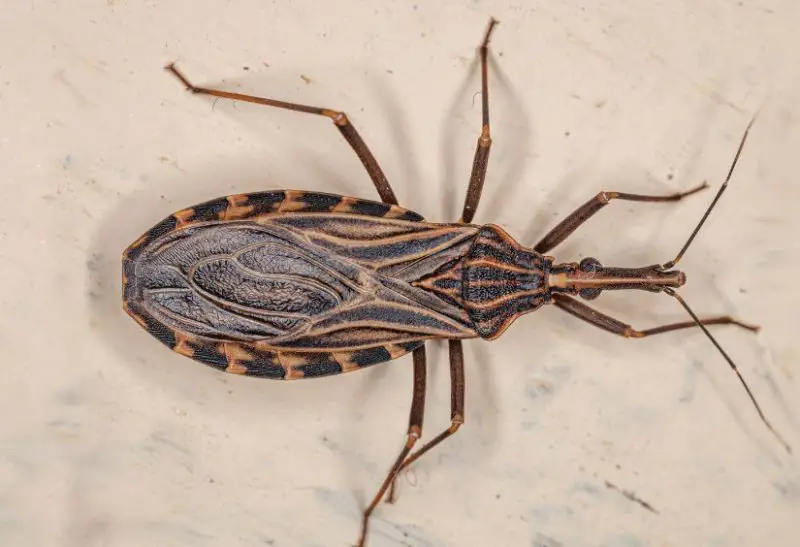
The Kissing Bug, also known as the Bloodsucking Conenose, is a dark, flat-bodied insect with orange or red stripes along its abdomen edges. Adults measure between 20 and 30 mm (¾ to 1¼ inches) long and are most active at night. They are called “kissing bugs” because they tend to bite around the lips or face while people sleep.
This species is native to the southern United States but has been occasionally found in Pennsylvania, especially in warmer months. They hide in cracks, under porches, or near animal shelters, emerging at night to feed on blood from mammals, including humans. After feeding, they often defecate near the wound, which is how parasites may be transmitted.
The main concern with Kissing Bugs is their potential to carry Trypanosoma cruzi, the parasite that causes Chagas disease. While this disease is rare in Pennsylvania and typically not locally transmitted, imported cases exist in the U.S. Bites themselves can cause local irritation, allergic reactions, or swelling.
Although they look threatening, Kissing Bugs are not aggressive and only bite while feeding. Preventing infestations involves sealing cracks, reducing outdoor lighting, and keeping pet sleeping areas clean. Monitoring for these insects is recommended in southern and central Pennsylvania counties.
Horse Fly (Tabanus species)
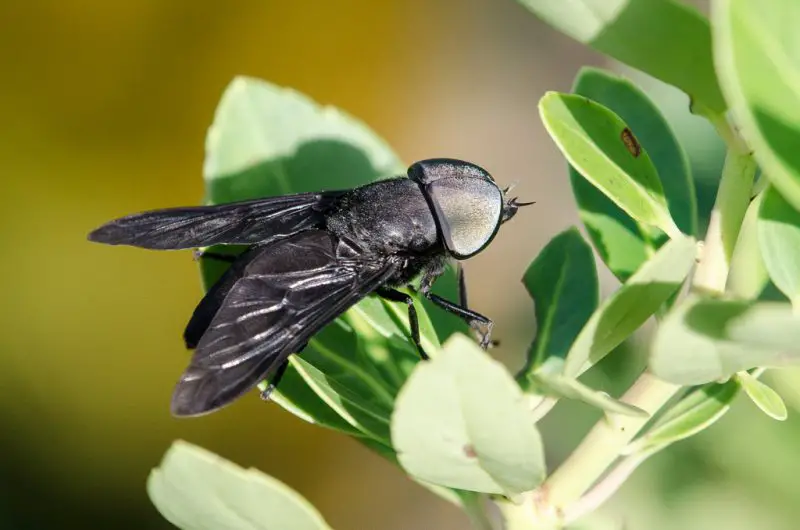
Horse Flies are large, robust insects ranging from 10 to 25 mm (½ to 1 inch) long, with green or patterned eyes and clear or smoky wings. Females have scissor-like mouthparts capable of cutting through skin to feed on blood, while males feed mainly on nectar. Their buzzing flight and size make them easy to notice.
They thrive in wetlands, fields, and forest edges, particularly during the humid summer months. Females require blood meals to produce eggs and will pursue humans, livestock, or wildlife persistently. Horse Flies are active during daylight hours, especially near water where they breed.
A Horse Fly bite is extremely painful, producing immediate burning and bleeding. The wound may remain sore or swollen for days, and scratching can lead to infection. Although they are not major disease vectors in Pennsylvania, they can mechanically transmit certain pathogens between animals.
Because they rely on sight and motion to locate hosts, wearing neutral-colored clothing and avoiding scented products can help reduce attraction. Their painful bites and relentless pursuit make them one of the most bothersome summer insects in the state.
Black Fly (Simuliidae family)
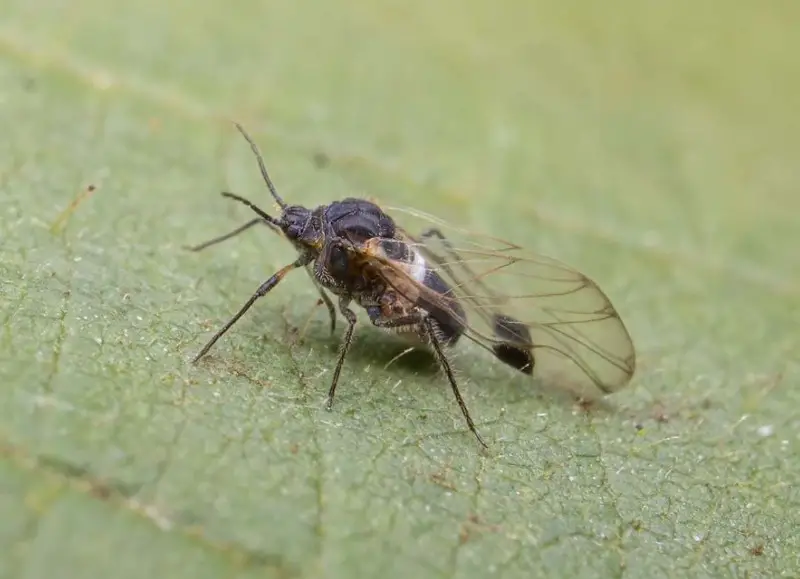
Black Flies are tiny, hump-backed insects ranging from 1 to 5 mm in length, often appearing as small dark specks hovering around the head or neck. Despite their size, these flies are extremely persistent and capable of inflicting painful bites. They are most easily recognized by their compact bodies, broad wings, and short antennae.
These insects are abundant near flowing water, such as rivers and streams, where females lay their eggs on submerged rocks and vegetation. Pennsylvania’s spring and early summer months see the highest activity, especially in forested or rural areas. Swarms can emerge in huge numbers, making outdoor work and recreation unpleasant.
Female Black Flies feed on blood to produce eggs, using their cutting mouthparts to slice the skin and lap up the blood that flows out. Their bites often cause intense itching, swelling, and welts, and in sensitive individuals, allergic reactions such as headaches or fever can occur. The irritation may last for several days.
While Black Flies do not transmit human diseases in Pennsylvania, their constant biting can cause significant discomfort and even secondary infections from scratching. Wearing long sleeves, using insect repellent, and avoiding riverside areas during peak seasons are the best preventive measures.
Blister Beetle (Meloidae family)
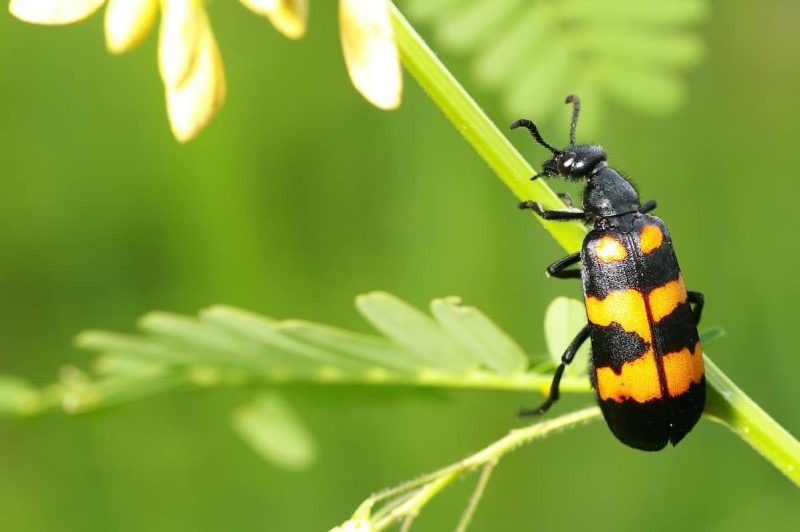
Blister Beetles are slender, soft-bodied insects ranging from 12 to 25 mm (½ to 1 inch) long. They come in a variety of colors, including metallic green, gray, or striped black and yellow. These beetles are easily identified by their elongated neck-like thorax and flexible wing covers that give them a soft appearance.
They are often found in fields, gardens, and meadows, feeding on flowers and foliage. Although adults primarily eat plants such as alfalfa and clover, their larvae are beneficial predators that feed on grasshopper eggs. Because they cluster on flowers, human contact with them often occurs while gardening or picking crops.
Blister Beetles secrete a potent chemical called cantharidin, a defensive toxin that causes the skin to blister upon contact. Even a small amount of crushed beetle fluid can result in painful welts or burns that take days to heal. Ingesting beetles accidentally—such as in contaminated hay—can be fatal to livestock.
For humans, the toxin is not deadly but extremely irritating. Wearing gloves when handling plants, avoiding direct contact with unknown beetles, and shaking out field crops before storage can reduce exposure to these toxic insects.
Carpenter Bee (Xylocopa virginica)
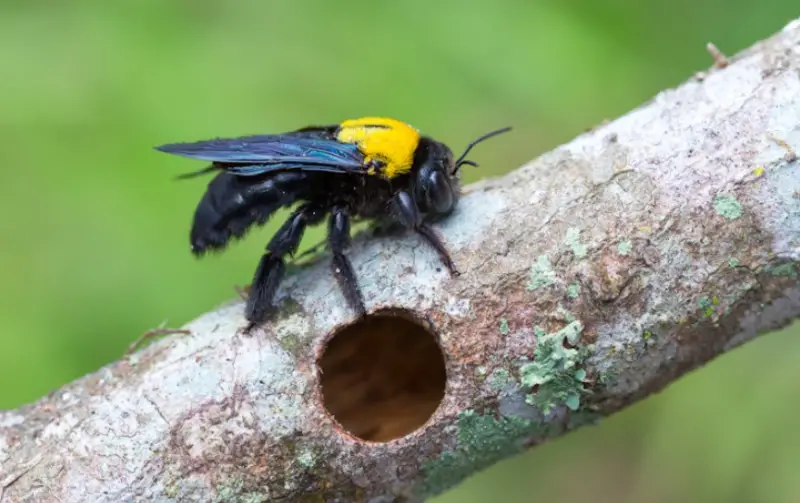
Carpenter Bees are large, robust bees resembling bumblebees but with shiny, hairless black abdomens instead of fuzzy ones. Adults measure about 19 to 25 mm (¾ to 1 inch) long and are often seen hovering near wooden structures. Males are territorial and will fly close to people but lack the ability to sting.
They are commonly found in gardens, wooden fences, eaves, and decks, where they excavate round holes to create nesting tunnels. Over time, their burrowing can weaken wooden structures, causing visible damage. Despite their nesting habits, they are solitary bees that do not form large colonies like honeybees or wasps.
Female Carpenter Bees can sting but are non-aggressive, doing so only if directly handled or provoked. Their sting is painful but not venomous enough to cause serious harm. The primary concern with this species is structural, as repeated nesting can leave wood riddled with holes.
Carpenter Bees are important pollinators of open-faced flowers. Painting or varnishing exposed wood, filling old holes, and providing alternative nesting sites can help deter them while preserving their ecological value.
Asian Lady Beetle (Harmonia axyridis)
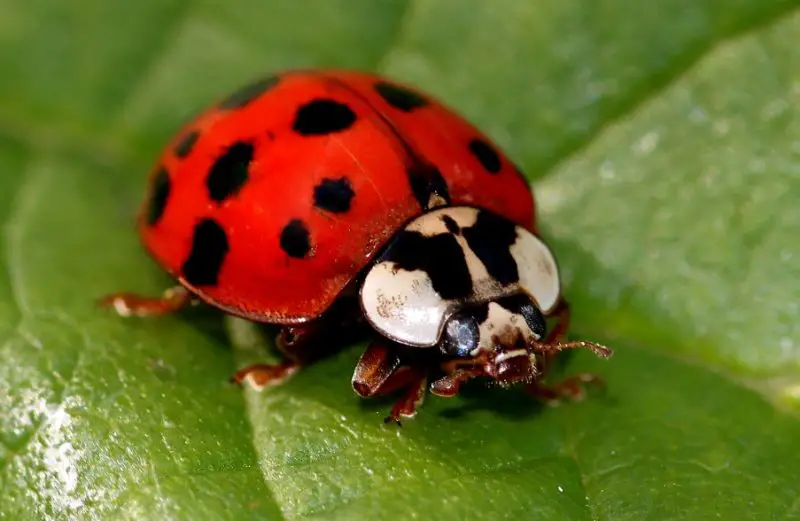
The Asian Lady Beetle is an introduced species that closely resembles the native ladybug but varies in color from orange to red with black spots—or sometimes none at all. Adults are 6 to 8 mm long with a distinctive black “M” or “W” marking on the pronotum (the white area behind the head).
These beetles are beneficial during summer, preying on aphids and other soft-bodied pests in gardens and agricultural fields. However, in the fall, they become a nuisance when they invade homes in large numbers seeking warmth for overwintering. Once inside, they gather near windows, attics, and ceilings.
When disturbed, Asian Lady Beetles release a foul-smelling yellow fluid that stains surfaces and causes mild skin irritation or allergic reactions in sensitive individuals. Some also bite exposed skin, producing a sharp pinch but no venom. Their presence can trigger respiratory allergies or asthma in certain people.
Preventing infestations involves sealing cracks, installing window screens, and vacuuming up indoor beetles rather than crushing them. Despite their nuisance factor, they remain valuable natural pest controllers outdoors.
House Centipede (Scutigera coleoptrata)
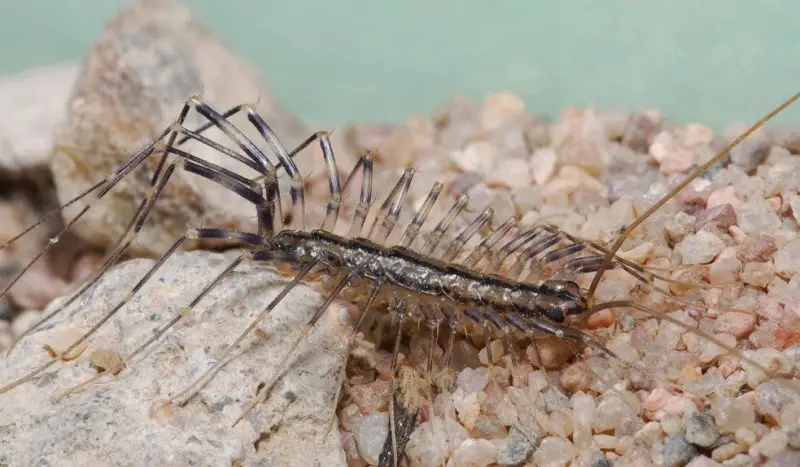
The House Centipede is a long, fast-moving arthropod with a flattened body measuring 25 to 40 mm (1 to 1½ inches) in length and up to 15 pairs of elongated, delicate legs. Its body is grayish-yellow with dark stripes running along the back, giving it a distinctive striped appearance.
Native to the Mediterranean region, it has adapted well to indoor environments across Pennsylvania. House Centipedes prefer damp, dark areas such as basements, bathrooms, and crawl spaces, where they feed on spiders, cockroaches, termites, and other household pests. They are nocturnal hunters that use their speed to capture prey.
Although they look frightening, House Centipedes are beneficial predators that rarely harm humans. However, they can bite if handled roughly, injecting mild venom that causes localized pain, redness, and swelling similar to a bee sting. The effects usually subside within a few hours.
Their presence often indicates excess humidity or underlying pest infestations. Keeping homes dry, reducing clutter, and sealing entry points can minimize encounters. Despite their unnerving appearance, they are valuable natural pest controllers in Pennsylvania homes.
Tips for Avoiding and Managing Dangerous Bugs in Pennsylvania
Learn to Identify Common Species
One of the most effective ways to avoid harmful encounters is to recognize dangerous insects and arachnids. Familiarize yourself with key identifiers such as the red hourglass marking of the Northern Black Widow, the white spot on the Lone Star Tick, and the velvety red body of the Velvet Ant. Knowing what to look for allows you to react appropriately—either by maintaining a safe distance or by taking preventive measures before infestation occurs.
Use Protective Clothing and Repellents
When spending time outdoors—especially in wooded, grassy, or humid areas—wear long sleeves, pants tucked into socks, and closed shoes. Apply insect repellent containing DEET, picaridin, or permethrin-treated clothing for enhanced protection against ticks and mosquitoes. Light-colored clothing also helps detect crawling insects before they bite or sting.
Keep Outdoor and Indoor Areas Clean
Many biting or stinging insects are drawn to food waste, open trash, and sugary residues. Regularly cleaning outdoor eating areas, covering trash cans, and keeping pet food indoors can greatly reduce yellowjackets and hornet activity. Inside your home, sealing cracks and controlling moisture prevents centipedes, spiders, and beetles from nesting.
Inspect After Outdoor Activities
Ticks and small insects often go unnoticed after outdoor exposure. Always check your skin, hairline, and clothing when returning indoors, particularly after walking through tall grass or forested areas. Showering soon after outdoor activities and washing clothes on high heat can remove or kill hidden ticks before they attach.
Seek Medical Help for Serious Reactions
If you experience symptoms such as swelling of the throat, dizziness, rash, or difficulty breathing after a sting or bite, seek medical attention immediately. Severe allergic reactions, also known as anaphylaxis, can be life-threatening. Even minor bites that swell, blister, or appear infected should be evaluated by a healthcare provider to prevent complications.
FAQs About Dangerous Bugs in Pennsylvania
Are venomous spiders common in Pennsylvania?
Only two medically significant spiders are found in Pennsylvania—the Northern Black Widow and the Brown Recluse. While both are rare and prefer undisturbed areas, bites can cause serious reactions. The majority of spiders in the state are harmless and actually beneficial for controlling pest populations.
Can ticks be active in winter?
Yes, adult Black-legged Ticks can remain active in Pennsylvania during mild winter days when temperatures are above freezing. They become less active in deep winter but quickly reemerge in early spring. Year-round prevention, such as keeping lawns trimmed and using repellents, remains important.
What should I do if I find a tick attached to my skin?
Use fine-tipped tweezers to grasp the tick close to the skin and pull it out steadily without twisting. Clean the bite area with soap and disinfectant. It’s a good idea to record the date of the bite and monitor for any signs of fever, rash, or fatigue over the next few weeks, as these can be early symptoms of Lyme disease.
Are Velvet Ants really capable of killing cows?
No—despite their nickname “Cow Killer Ants,” Velvet Ants cannot harm large animals or humans fatally. Their sting is, however, extremely painful, often described as one of the most intense among North American insects. They should not be handled, but they are not aggressive and sting only in defense.
How can I safely remove a hornet or wasp nest near my home?
Never attempt to remove a large nest without protection or experience. Contact a licensed pest control professional to handle nests, especially those of Bald-faced Hornets or Yellowjackets, which can attack in swarms. For smaller paper wasp nests, removal should be done at night when the insects are less active and using protective gear.
Do mosquitoes in Pennsylvania carry diseases?
Yes, several mosquito species in Pennsylvania can carry West Nile virus, which is monitored annually by the state’s health department. Most infections are mild, but severe neurological symptoms can occur in rare cases. Eliminating standing water and using repellents are the best ways to reduce risk.
Are house centipedes dangerous?
House Centipedes are not dangerous to humans, though their appearance can be alarming. Their venom is mild and rarely causes more than localized pain if they bite, which happens only when handled roughly. In fact, they are beneficial predators that help reduce cockroach and spider populations indoors.
What time of year are insects most active in Pennsylvania?
Most dangerous insects are active from late spring through early fall, with peaks in June through September. Ticks and mosquitoes thrive in warm, humid weather, while wasps and hornets become more aggressive in late summer as their colonies reach maximum size.
How can I protect pets from tick-borne diseases?
Regularly use vet-approved tick preventatives, such as oral medications or topical treatments. After outdoor walks, check your pets’ fur, ears, and between their toes for ticks. Keeping your yard mowed and removing leaf litter helps reduce tick populations near your home.
Should I report sightings of invasive or medically important insects?
Yes, sightings of invasive species such as the Spotted Lanternfly or clusters of Velvet Ants should be reported to local environmental or agricultural authorities. Monitoring helps track the spread of non-native insects and protect Pennsylvania’s ecosystem and public health.


